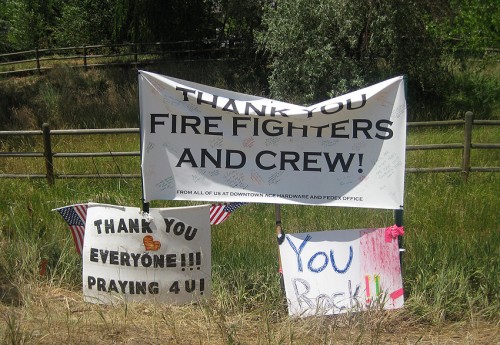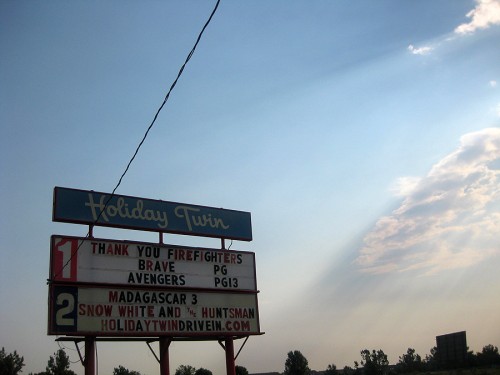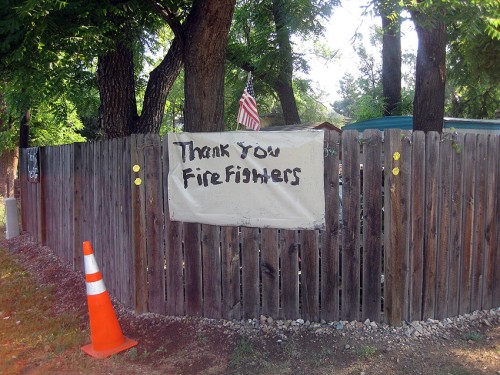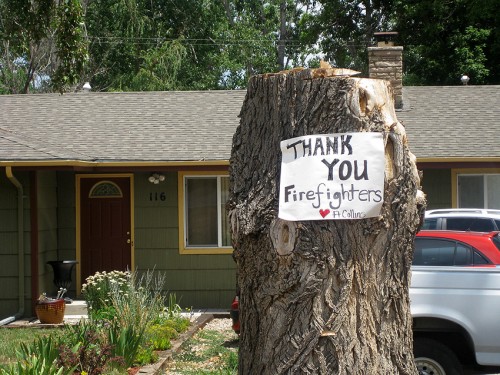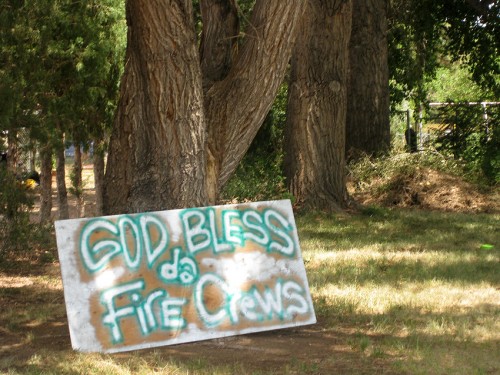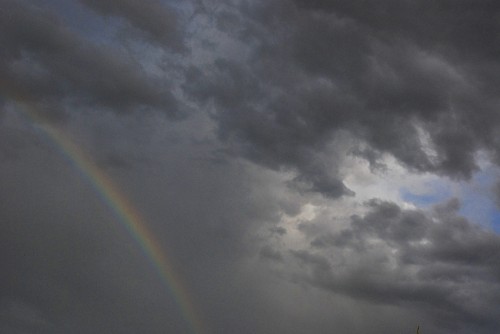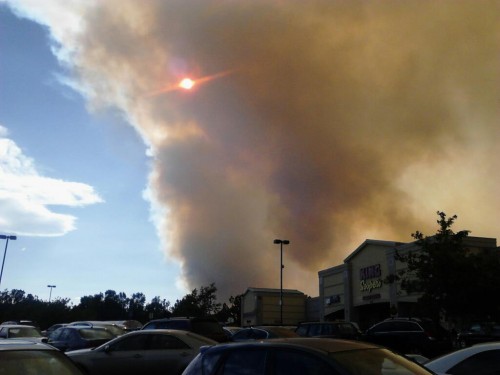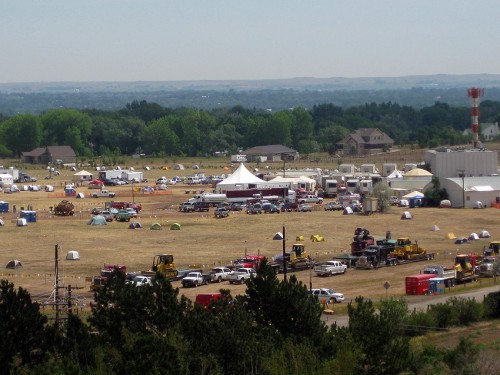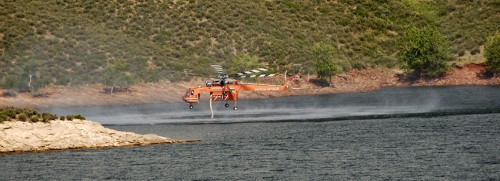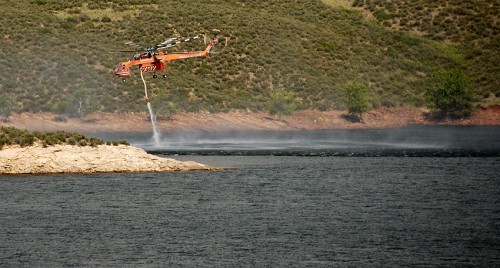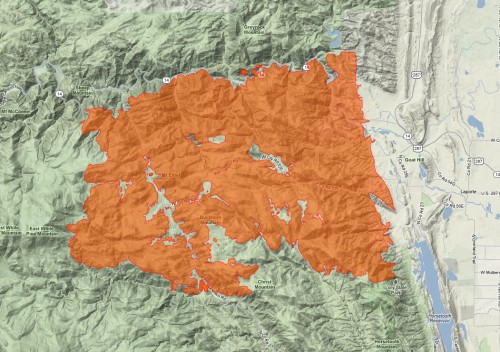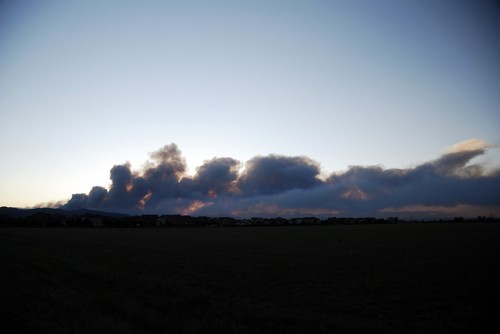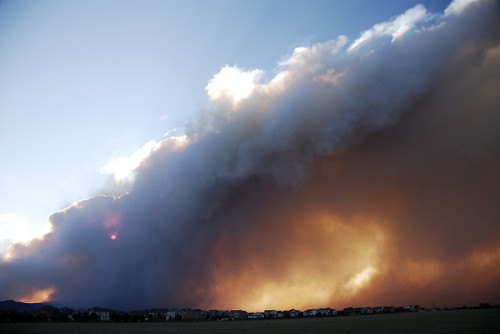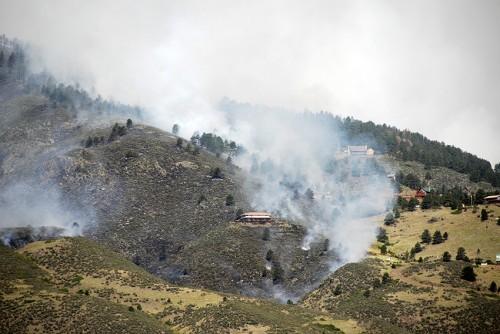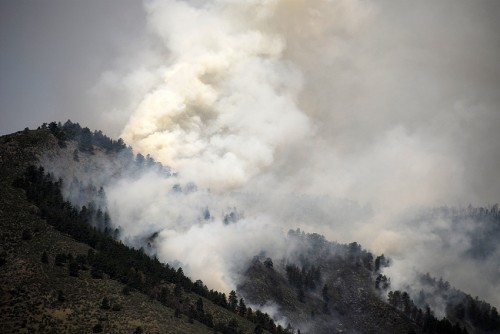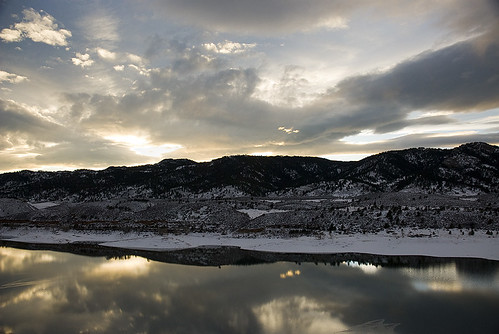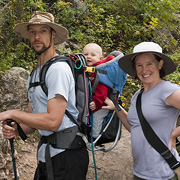Greyrock mountain is on fire. So far, more than 7,300 acres have burned, and only 5% contained. Luckily, few homes are in imminent danger, and only a couple neighborhoods have been evacuated. But, this fire is HUGE.
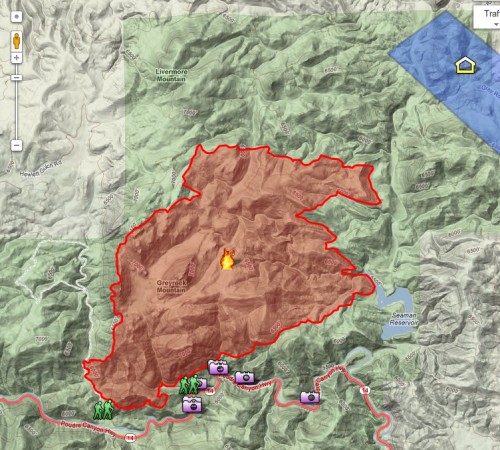
Hewlett Gulch Fire Map - 05/17/12
Don’t worry, we’re not in danger here at ColoCalders HQ. All we’ve had to deal with so far is the smoke – and there’s plenty of that. We’re under air quality warnings this week, and keeping G inside when it’s so warm and sunny out is not fun! But, I’m very thankful that the smoke is all I have to complain about.
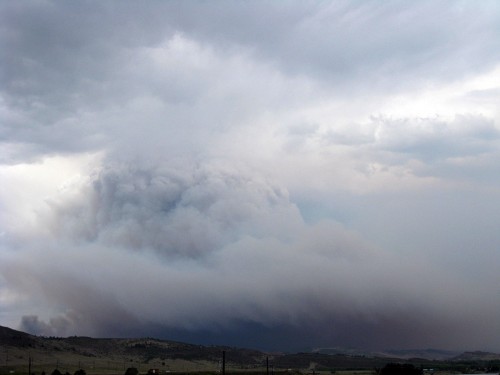
View from my work building on Wednesday, 05/16/12
The CSU atmospheric Science Department, where I work, is much further west, though. It sits just below Horsetooth Reservoir at the edge of the foothills. And the views of the giant smoke plume were incredible yesterday. Today, there’s so much smoke and haze in the area that you can’t see up into the plume. And every time the wind shifts to a more northerly direction, it gets dark down here below the smoke.
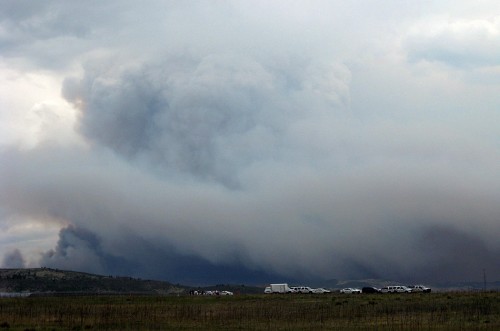
Watching the smoke cloud in the foothills
As a student climatologist, I have to get a bit geeky here. Every year, we have wildfires sprout up in the mountains, and it is a natural process that actually helps keep the forests healthy. But, we have a few other issues this year.
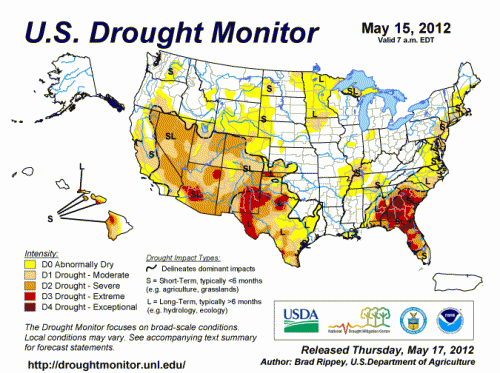
US Drought Monitor Map - 05/16/2012
Wildfires in May aren’t unheard of, but it is pretty early in the year for it. The US Drought Monitor Map shows that much of the western US is back to drought conditions, and this fire is located in a tiny blob of severe drought area in extreme north central Colorado. We’re also at 18% of normal snow-water equivalent in the Front Range drainage, and we’ve had a dry, warm winter and spring.
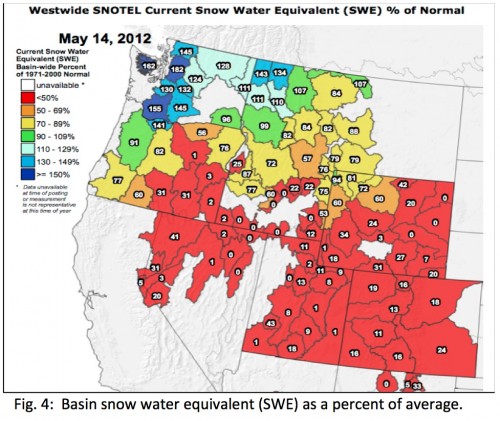
Basin Snow Pack Percent of Normal
Drought stressed plants are crispier (that’s the technical term, I’m sure), and more easily catch fire, but there is ANOTHER issue on top of that. When snow has disappeared and the rains have diminished, there’s less water on the surface to evaporate and moisten the air. Plants that are experiencing drought conditions also tend to release less water into the air (through transipration), which reduces the low level moisture content. This creates a difficult feedback loop, and drought leads to more drought. And we’re definitely seeing dry conditions in the atmosphere and the surface around here.

Relative Humidity This Week
When relative humidities get low, our afternoon rain tends to evaporate on the way down, reducing the amount on the surface and increasing gusty downdrafts. Drier air leads to less rain and more wind, perfect conditions for fire weather.
We’ve got drought, we’ve got a missing snow pack, we have warm and very dry weather, and we’ve got one MORE fire danger to worry about on top of that. The Bark Beetle.
Pine trees have been dying off in huge swaths over the last few years. In some parts of Colorado, all you can see for miles and miles are dead pine trees. So far, the northern Front Range has escaped the worst of this, but we have started developing patches of beetle-killed trees on all of the local hillsides. It’s a terrible thing to see, and really scary when you imagine what could happen if these dead forests dry out and catch fire.
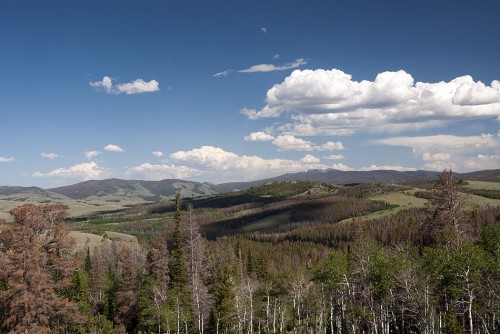
Lots of dead trees - near the CO/WY border in July 2009
So, we’re keeping a close watch on fires this season. And since the beetle epidemic isn’t getting better, and western droughts are more likely due to climate change, it’s likely that our mountain ranges are heading for a major transformation in the next few decades.
You can find up-to-date information about the Hewlett Gulch Fire at the following sites:
InciWeb: http://www.inciweb.org/
The Coloradoan: http://www.coloradoan.com/
Larimer County Health: http://larimer.org/news/

